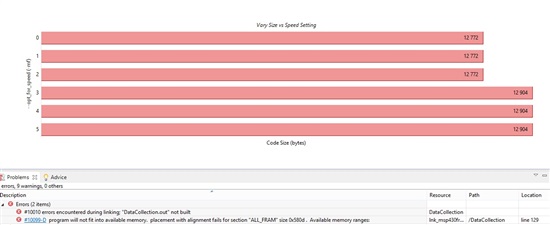Hello,
I work with msp430fr5739 device.
I wonder if there is any description of unused memory space between info_a and RAM: 300h memory slots and between RAM and FRAM: a200h slots.
I need pretty large arrays of doubles to process time series from accelerometer, but the only available space seems to be an information space: 1900-18ff.
MEMORY MAP of the MSP430FR5739 0000-0FFF = peripherals (4 KB) 1000-17FF = bootstrap loader BSL0..3 (ROM 4x512 B) 1800-187F = info B (FRAM 128 B) 1880-18FF = info A (FRAM 128 B) 1900-19FF = N/A (mirrored into info space) 1A00-1A7F = device descriptor info (FRAM 128 B) 1A80-1BFF = unused (385 B) 1C00-1FFF = RAM (1 KB) 2000-C1FF = unused (41472 B) C200-FF7F = code memory (FRAM 15743 B) FF80-FFFF = interrupt vectors (FRAM 127 B)
I tried writing to these sections, but lately when trying to read I got totally wrong values.
I am stuck here for a couple of days and would really appreciate your help.



